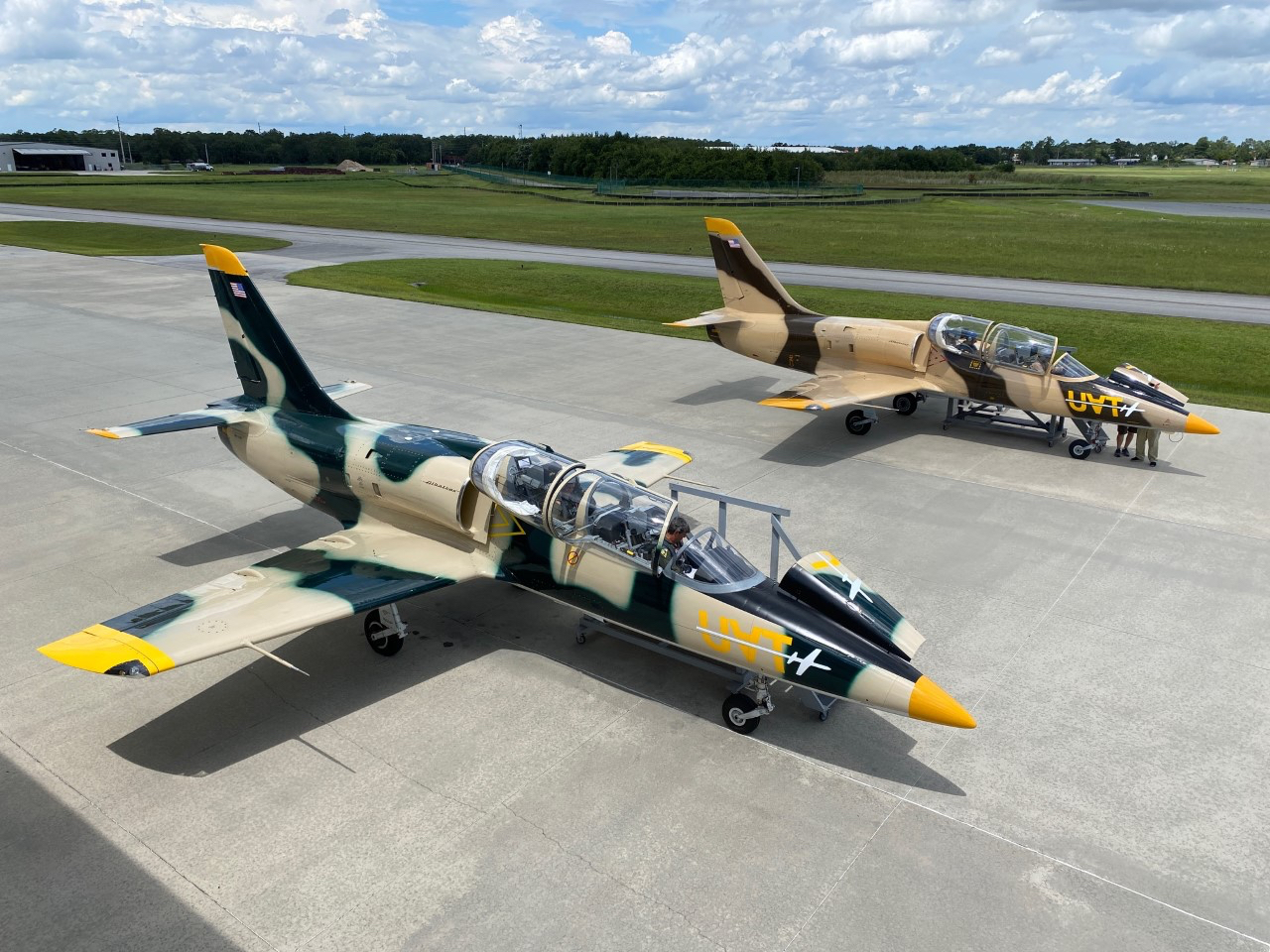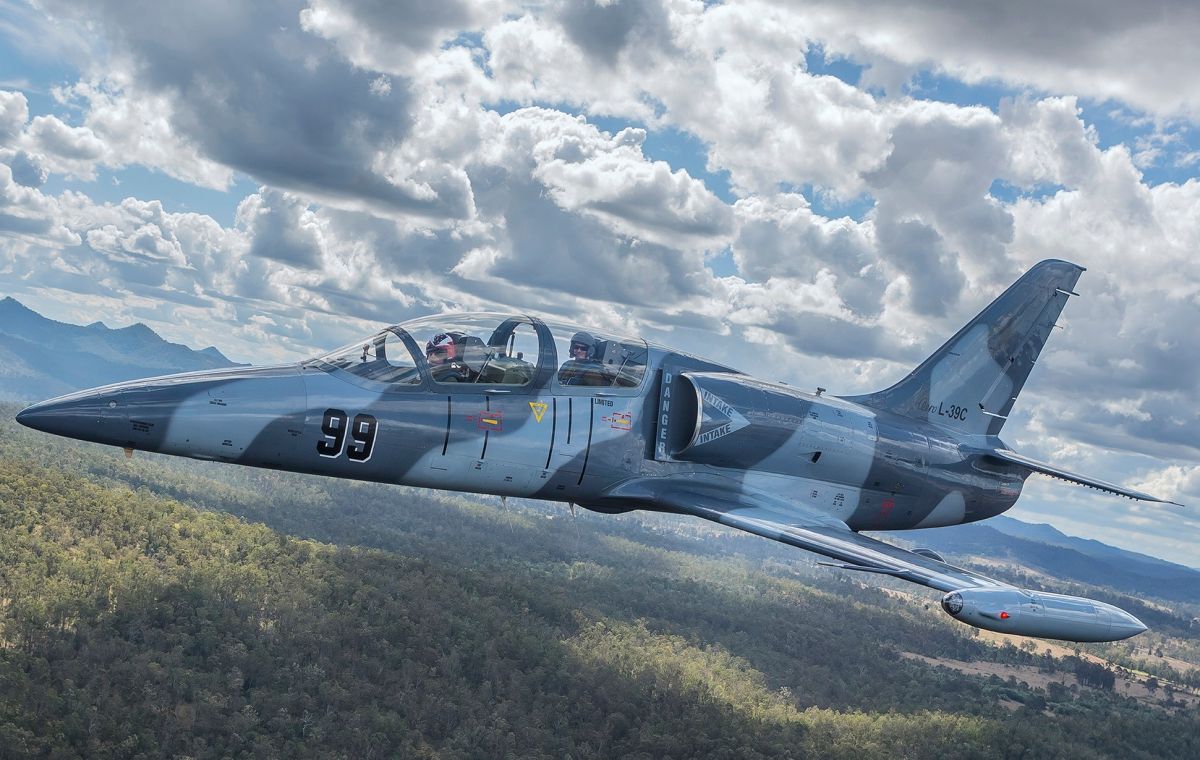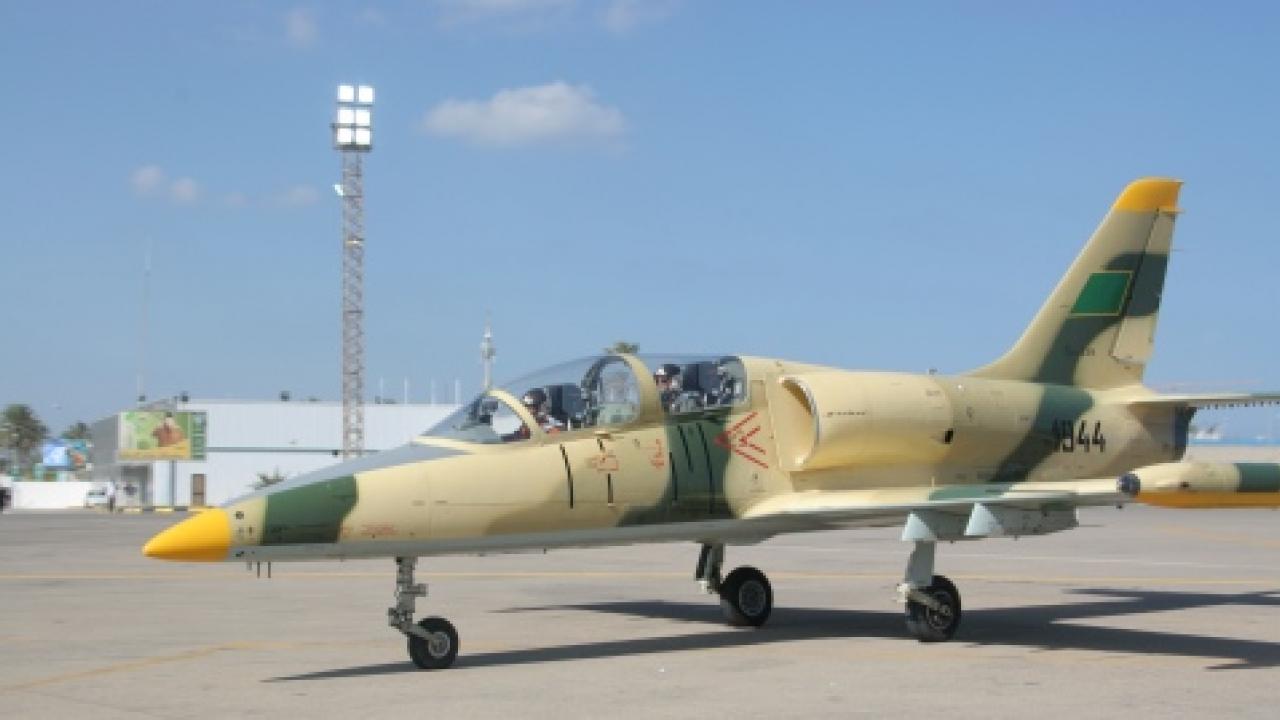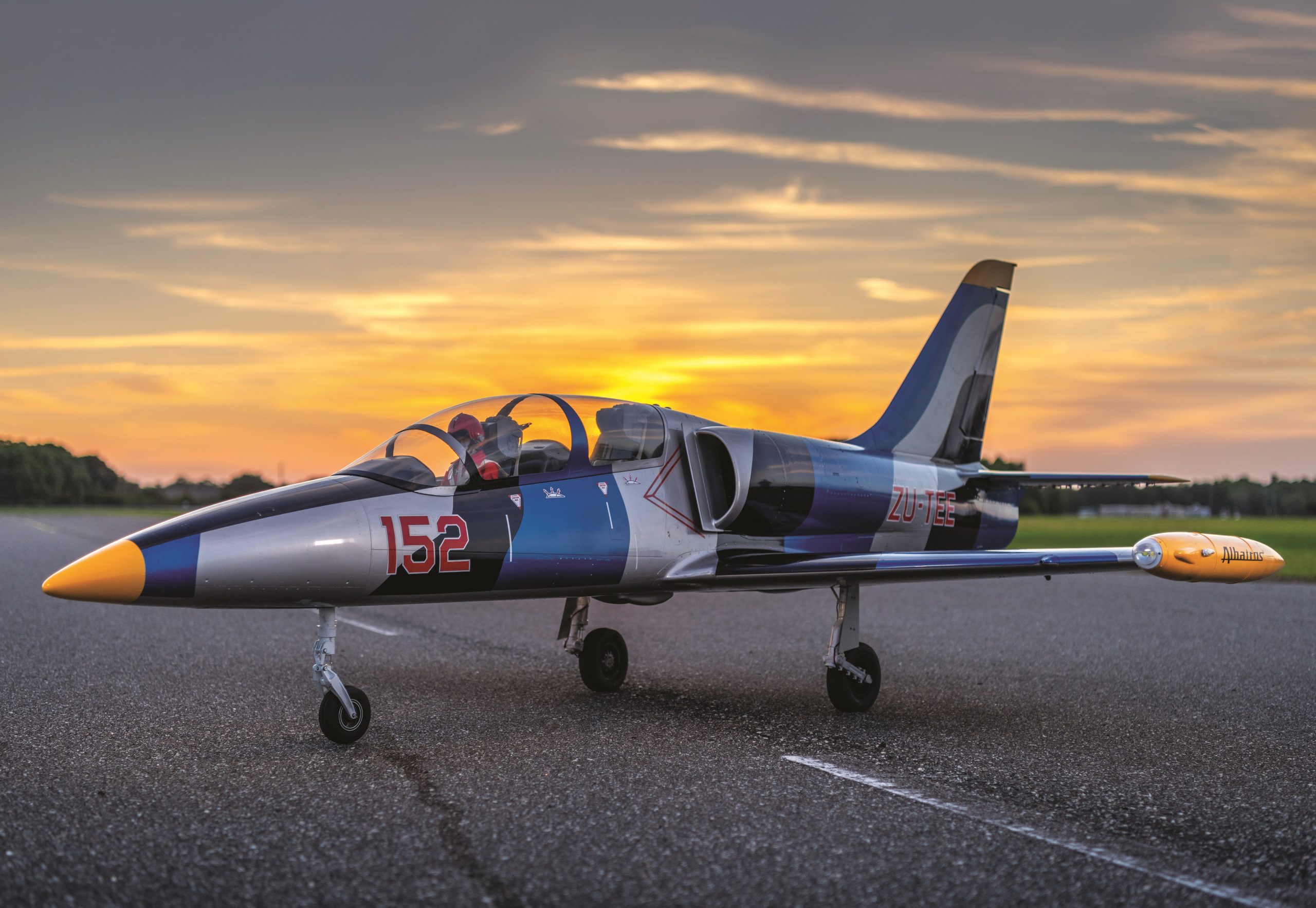L-39 Fighter Jet - The L-39 Albatros is a two-seat, single-engine aircraft designed and manufactured by Aero Vodochodi for the Czechoslovak Air Force. The aircraft was first equipped with turbofan guns and was later upgraded to the L-59 Super Albatros.
The Aero L-39 Albatros is used as a versatile jet trainer as well as a strategic reconnaissance aircraft and light fighter support.
L-39 Fighter Jet

The aircraft is based on its predecessor, the L-29 Maia/Delfina. About 2,900 L-39s are currently in service with 30 air forces worldwide.
Dcs: L 39 Albatros
In June 2010, Algeria awarded a contract to Aero Vodochodi for the supply of L-39 aircraft. Another contract was signed with Yemen in February 1999 for the delivery of 12 L-39C combat aircraft.
The L-39 has 12 variants including L-39X-01-X-07, L-39C, L-39CM, L-39M1, L-39V, L-39ZO, L-39ZA, L-39ZAM, L-39ZA/. ART, L-39MS, L-139 Albatros MM, L-159.
The L-39C is an advanced version equipped with two pylons under each wing and can be used for standard missions.
The L-39ZO is an instrument aircraft equipped with four pylons that can accommodate 1,150 kg of payload. This variant completed its maiden flight in June 1975 and entered service in Iraq in 1977.
Analysis: How Aero Vodochody Recharged The L 39
The L-39ZA is an armed variant of the L-39ZO. Equipped with a twin-turret 23mm Gsh-23L cannon and K-13 or R-60 air-to-air missiles.
The L-39MS is an extended version of the L-39 jet trainer. With a reinforced fuselage, a longer nose, it finally fits the cockpit seat and Lotarev DV-2 engine.
The L-159 is a modern trainer with external avionics and Honeywell F124 engines. Aero and the Czech Army signed a contract to upgrade the L-159 aircraft in June 2017.

Some variants of the L-39NG aircraft are modern and efficient light jets designed to serve as advanced air forces in light attack units and/or as a unique, robust training system. The aircraft is based on the new L-39 aerodynamic concept with features optimized to reduce drag and improve efficiency.
L 39 Albatros Trainer / Ground Attack Aircraft
The designer of the L-39 aircraft, Jan Vicek, took over the design work of the L-39 in 1966. The aircraft is designed to perform basic and advanced pilot training, operational training, patrolling, target simulation and light combat attack missions.
It can accommodate five main rubber fuel tanks behind the cockpit. Each fuel tank can hold 1,055 l of fuel.
Two more fuel tanks with a capacity of 100l each are built into the non-releasable wings. The jet transmitter is also equipped with two 350 l tanks on masts mounted on board, increasing the total fuel capacity to 1,955 l.
Development of the L-39 Albatros began in the 1960s. The first flight of the plane was completed in November 1968.
Aero Vodochody L 39za “albatros”
Full production was delayed until 1972 due to air intake design flaws. The L-39 entered service with the Czechoslovak Air Force in 1974 when design deficiencies were overcome.
Characteristics The long pointed nose on the front part of the cockpit represents the L-39 line equipped with electronic instruments and a built-in oxygen generation system. The aircraft is equipped with a smoke generation system, an escape system, a tricycle-type descent system, anti-collision lights and exposure lights.
It is also equipped with a SAFIR 5 auxiliary power unit that has the ability to automatically stop the engine on the ground and restart the engine in an emergency.

The L-39 has a pressurized cockpit equipped with two VS-1-BRI bohemian rocket-assisted ejection seats in which the rear seat is slightly elevated.
L 39 Albatros: Thrilling Aerobatic Fighter Jet Experience Review.
The cockpit is equipped with a mission computer, head-up display (HUD), multi-function display (MFD), air data computer (ADC) and front control panel.
A port instrument system, a friendly or enemy information transponder, an electronic standby instrument, a tactical air navigation system, and a Bendik/Rex range finder form part of the flight deck.
Communication and navigation devices installed in the aircraft include a manual throttle and stick control system, a high-frequency radio, a global positioning system and an inertial system.
The avionics suite equipped on the L-29 includes a horizontal position indicator, radio altimeter, intercom and radio control panel, radio magnetic indicator, radio signal indicator, electronic flight instrument system and head position and relative system.
Migflug Gmbh: Tom Cruise' Italian Voice Flies A Fighter Jet Prior To Recording Top Gun: Maverick
The L-39 has four wheels, two of which are on each wing and two under the wing. It can accommodate 1,000 kg of payload. The aircraft is equipped with a 23mm Gš-23 twin-barreled gun that can fire ammunition at a rate of 150 rounds per minute.
The aircraft also accommodates FFAR or CRV-7 missiles and AIM-9 air-to-air missiles. All weapons can be operated via the weapons control panel located in the front part of the cockpit.
The L-39 Albatros is powered by a single Ivchenko AI-25 TL twin turbofan engine, capable of producing a maximum thrust of 16.87 kN.

The length and width of the machine are 3.3 m and 0.98 m, respectively. Height 0.95m. Each machine will weigh around 350 kg and the assigned working life is 4000 hours.
Global Aerofoam L 39 Albatross Pnp
The L-39 can go up to 21 m/s. The maximum and cruising speed of the aircraft are 910 km/h and 750 km/h, respectively. Stopping speed 158 km/h. The maximum range is 1,350 km.
The service ceiling is 11,000m. Its maximum endurance is two hours and 45 minutes. The plane weighs about 3,400 kg, and the maximum take-off weight is 4,700 kg. The Albatros L-39 is the most popular jet in the world and has been adopted by over 30 air forces worldwide. Ideal for basic and advanced training, the L-39 was also used in military roles such as attack and reconnaissance. Built in the early 1970s, the Albatros is still one of the most mobile, agile and light small fighters in the world. Although the original L-39 Albatros has been discontinued since 1996, it is still widely flown around the world, and models have been gradually introduced to continue the popularity of the highly agile jet. Manufactured by Aero Vodochodi in Czechoslovakia, the L-39 was considered one of the most successful military training aircraft in the world and was used by various flight display teams due to its compact size and unparalleled agility.
Intended to be relatively compact, to be ideal for training missions and limited flight, the Albatros was only 39 feet long with a wingspan of only 31 feet, but still had room for a double cockpit. Powered by an Ivchenko AI-25TL turbofan engine, the L-39 Albatros has a top speed of 470 mph with a ceiling height of 37,000 feet. Weighing just 3,455 kg, the Albatros' small dimensions and light weight make it incredibly maneuverable, making the L-39 their aircraft of choice for many aerobatic display teams.
The small aircraft can only carry a small amount of weapons, but that doesn't stop some air forces from using the L-39 for attack missions. The L-39 Albatros has two weapons bays, one on each wing, which can carry a total of 284 kg of supplies, although some later upgraded L-39s could hold four bays. Common armaments include K-13 or R-60 air-to-air missiles, used either in combat or in conjunction with tanks.
L 39c N239df
Popular with aviators around the world, the L-39 Albatros is typically used as an aircraft before pilots transition to the MiG-29. It is excellent as a training aircraft due to its multi-role capabilities as a light attack or even military reconnaissance aircraft, allowing pilots to gain all the experience they need for future missions in a multi-role fighter such as the MiG. Although it only provides subsonic speed, its excellent visibility and small dimensions make it an ideal 'first force' for any pilot, making it a good aircraft for you to fly yourself. With the L-39 built in such large numbers, Jetifay can offer Albatros flights in many regions of the world.
During its lifetime, the L-39 Albatros was developed and upgraded into more than 10 different models. These models were built to meet different operational requirements and developed to serve different roles in different air forces, as well as natural upgrades during the L-39's production life. Notable examples include the L-39ZA which was fitted with stronger stalling equipment, a total of four armament points and also the GŠ-23L 23mm twin gun mounted under the cockpit with a magazine of 150 rounds. Another notable model was the L-39MS, which later became the L-59; This includes numerous upgrades with a longer nose, strengthened fuselage, new cockpit and new engine. It was developed in the mid-1980s and later became the L-59 Super Albatros.
Jetify provides access to many L-39 Albatros flights around the world. Due to the mass production and cost of these small jets, many aviation companies around the world have adopted them as the jets of choice. Although they differ in some areas, the most popular model is the L-39C; C' stands for 'Practical' which translates to discipline. About 2,260 parts of the L-39C were built worldwide, so it's easy to see the availability and popularity of this particular jet.

The L-39 Albatros is available to fly with Jetifi in multiple countries around the world. Popular with numerous air forces, air groups and flight schools around the world, the L-39 is the ideal jet experience.
Aircraft Photo Of 005
L 39 fighter, l 39 rc jet, f 39 fighter jet, l-39 albatros fighter jet, mig 39 fighter jet, l 39 jet fighter, l 39 jet for sale, l 39 albatros jet, fighter jet, jet l 39, l 39 jet trainer, l 39 jet fighter for sale

0 Comments